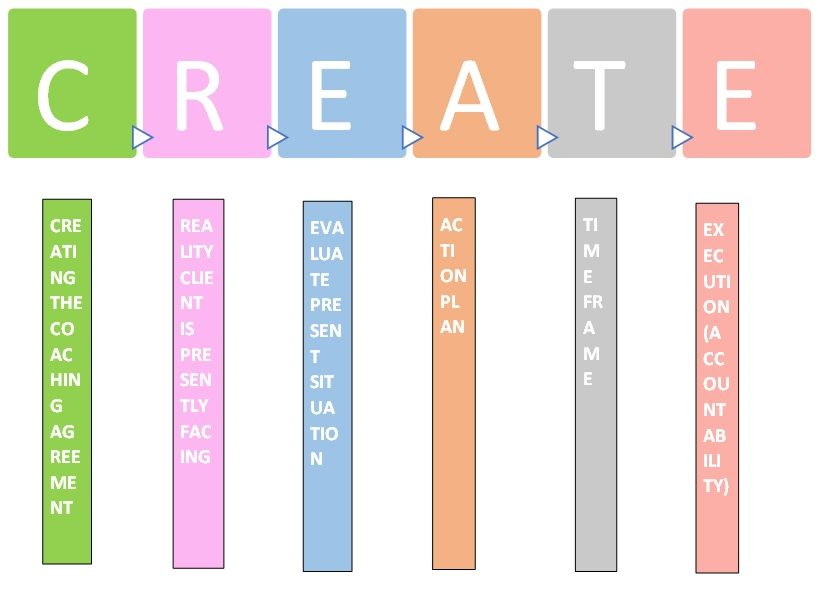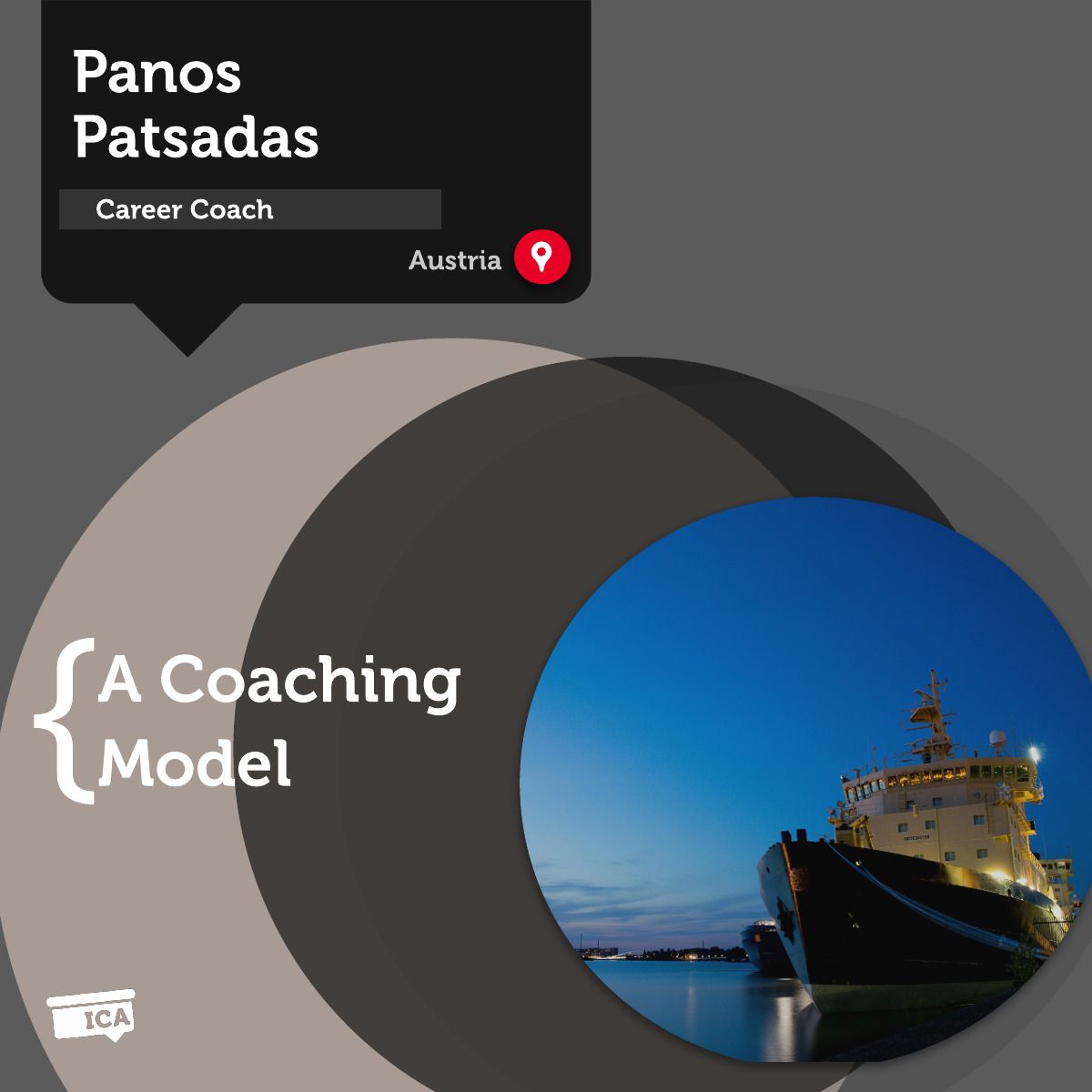A Coaching Model By Panos Patsadas, Career Coach, AUSTRIA
CREATE Help Seasoned Professionals Advance Their Careers
The Coaching Model I have created is called CREATE, and it is intended to facilitate blended coaching within my chosen niche. My niche is to assist young professionals to kick-start their careers in the shipping industry or help seasoned professionals advance their careers. The model follows a mix of traditional coaching approaches but with a stronger focus on the execution part, as the niche deals with people who are already committed or have already decided to pursue a career in the Shipping Industry.
CREATE

![]()
- Briefly explore the client’s awareness of what Coaching entails, and if unclear talk the client through what coaching entails, what the client may expect, and what expectations may not be part of coaching.
- What does the client want to explore in this day’s session?
- If the client is unclear about a specific goal, but brings a few different topics to the session, make the client aware of the different topics, and allow them space to choose the one they consider a priority to explore in this day’s session.
- What would the client want to achieve by the end of the Session?
- How will the client know he has achieved the goal/ objective of the session?
- What does success look like?
![]()
- Give space to clients and allow them to describe the present situation they are facing paying particular attention to triggers (voice changes, body posture, hand movement when talking through the different aspects of their current reality). Listen for triggers or repeated words that could indicate a certain part of their present reality is particularly important to them, or things they sound emotional about. Allow the client enough space to tell their story, and keep questions to a minimum allowing them to open up (if they are ready to do so). Once as a coach I have the first idea of clients’ reality, I will gently explore one or more of the triggers and allow the client to head in the direction they feel most drawn to.
- Allow clients to refer to their past, but make sure they keep such references limited to the ones which are relevant to their present situation. If the client is digressing, use questions that will make the client aware that some of their references to the past may not serve an active purpose in addressing the present situation.
- Lookout for Limiting perspectives.
![]()
- Reframe limiting perspectives to allow the client to seek answers from a positive standpoint.
- Ask the Client to elaborate on things that they may find helpful in handling their present challenge.
- Once they have listed possible actions, ask the client to elaborate further on how they feel these actions will assist them in addressing their present task/challenge.
- What will achieving this goal mean for the client? At this point, we will try to align the goal with the client’s values as this is likely to increase the client’s commitment to the goal.
![]()
- After having explored possible actions and the client has been able to successfully link how these actions will contribute to addressing their present challenge, I will ask the client to list concrete steps and create an action plan.
![]()
- The client has to put a clear time frame on when he is planning to perform each step of his action plan. The time frame has to be realistic, and we should not put pressure on clients for a quicker execution than they would be comfortable with.
![]()
- At this stage of the model, we ask clients to describe how they will hold themselves accountable for fulfilling the action plan discussed within the time frame agreed. It is extremely important to address how the client will remain accountable, as this can make the whole difference between the client achieving his goal, and the client giving up as he may have tried and failed in the past.
- Time permitting, Here we can also invite the client to share concerns he has with the action plan, or parts of the plan where they feel they may struggle, the time frame, etc. This can serve as a starting point for subsequent sessions with the client, where we can focus on possible challenges clients may face within their outlined actions plan.
Learn How to Create Your Own Coaching Model
Your Coaching Model reflects your values,
philosophies and beliefs and must communicate who you will coach
and the problems you will solve. Read more about creating your coaching model
References
https://routledgetextbooks.com
https://coachcampus.com/coach-portfolios/
https://coachcampus.com/coach-portfolios/power-tools/
Power Tool: Inquiry vs. Assumption (coachcampus.com)
